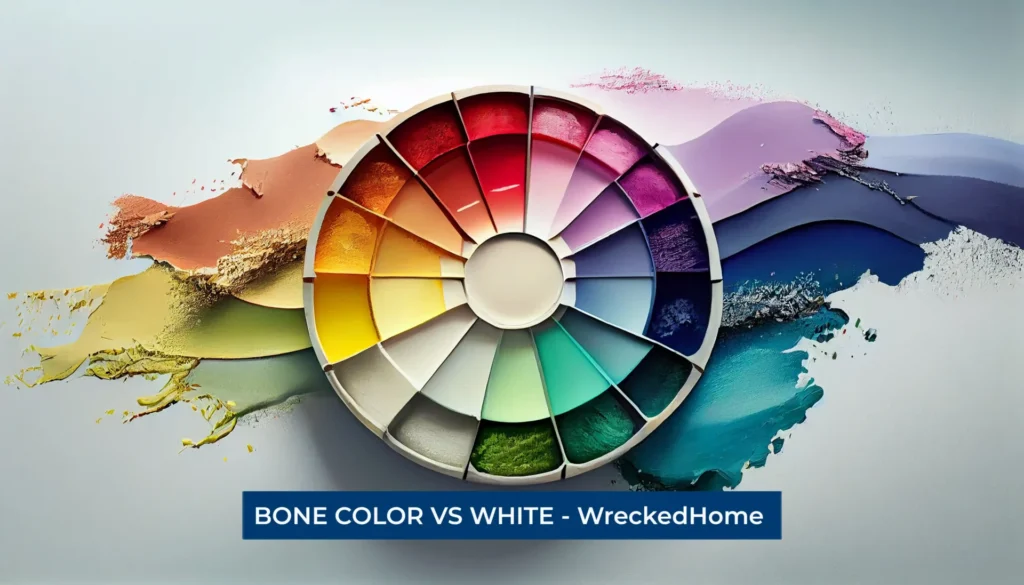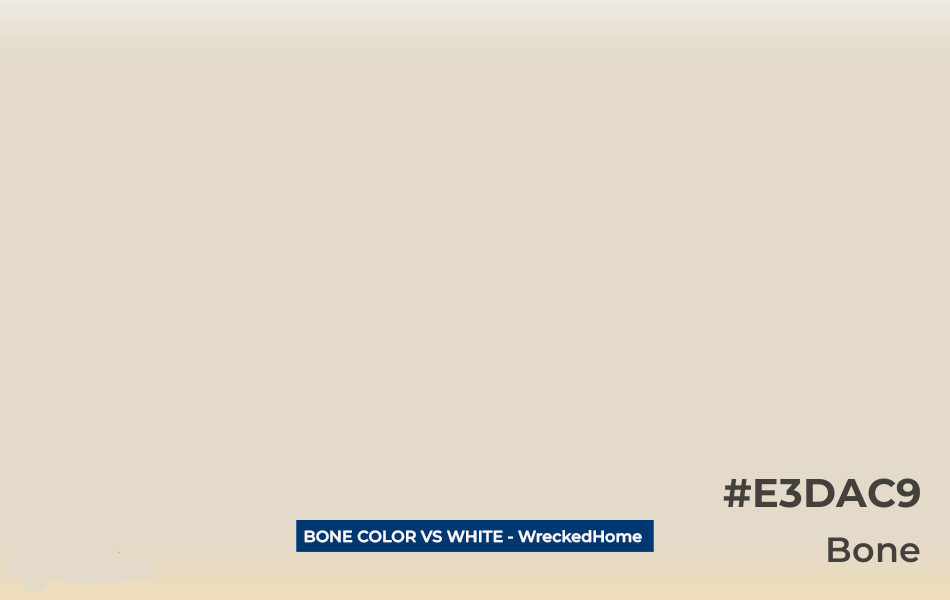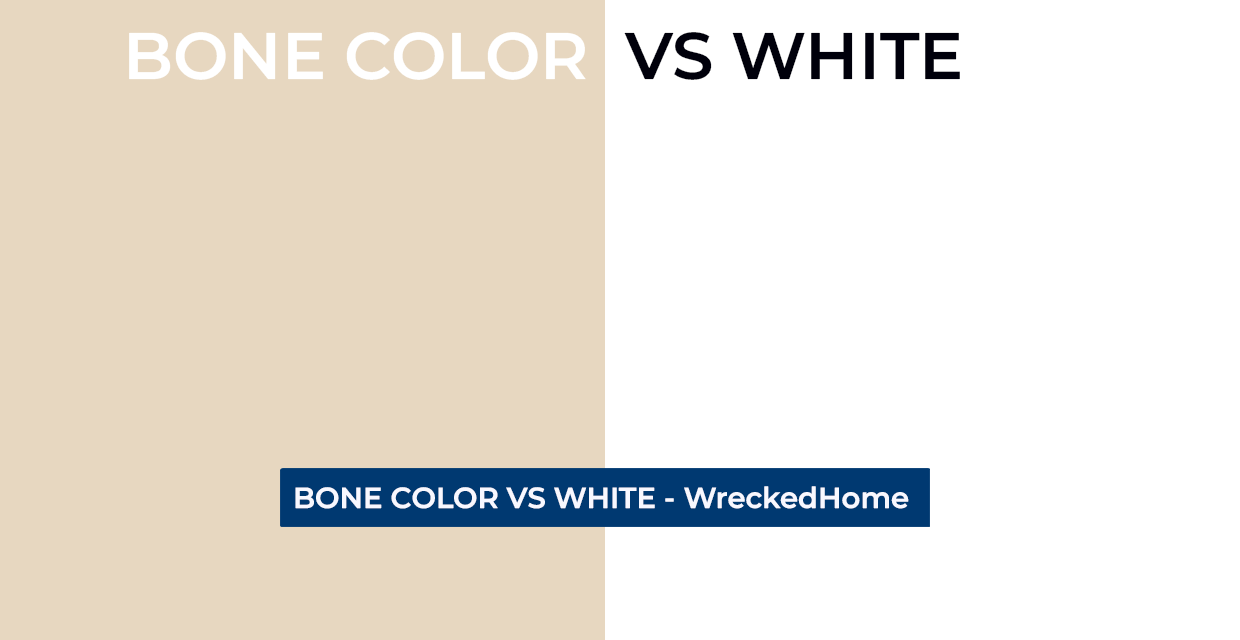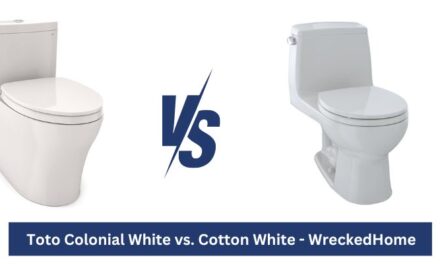If you are going to renovate your home or office then one fundamental aspect of interior design and aesthetics is color choice. The color acts as a fascinating aspect of DIY projects to enhance aesthetics. The secret of color magic is its power to evoke emotion, convey messages, and even shape perceptions. Therefore, the world of design is dramatically impacted by the choice of color.
In the race of neutral colors, two timeless contenders are getting attention are: bone color and white. But choosing between them depends upon mood, decision, and even our interactions with the world around us.
Within the expansive spectrum of colors, each has its unique identity and purpose. Without compromising uniqueness, everyone can get its pure and pristine appeal.
Take, for instance, the subtle distinction between bone color and white. Though they might seem closely related at first glance, each has its distinct personality and serves separate purposes.
In this article, we delve deep into the nuances of bone color and white to explore the intricacies of both, delving into their origins, implications, and their impact in various spheres of design and everyday life. For other color comparisons, check out our booth bay vs. evening blue guide.
Historical Background

In the historical tapestry of human civilization, colors have played pivotal roles. It has been intertwined with cultural, artistic, and design narratives. The origins of white is linked with ancient civilizations and consistently symbolized purity, innocence, and divinity.
The white color graced ancient Egypt and adorned the canvases of Renaissance artists. It always represented clarity and illumination of architecture.
On the other hand, bone color possesses a more organic and earthy origin that has been seen in diverse cultures to signify naturalness, warmth, and occasional antiquity.
What is Bone Color?

Bone color, as its name subtly implies, comes from the natural hue found in bones. This color radiates a warm and understated elegance, comfortably residing between the realms of beige and soft white. Its inherent earthiness exudes a timeless appeal that is simultaneously soothing and sophisticated.
Characteristically, the depth of bone color and its muted character creates a sense of grounded airiness. Its rich palette extends across the spectrum. Ivory, for instance, leans towards a slightly yellower tint while still retaining the base characteristics of bone. Another related term is “off-white”. This is a more generalized term that captures any white that isn’t “pure,” often inclusive of bone color and its adjacent shades.
In the design world, bone color is highly regarded for its versatility. In interiors, it provides a sophisticated look while remaining functionally neutral, pairing seamlessly with bolder hues. Furthermore, in product design, this hue often appears as a neutral backdrop that complements both contemporary and classic decor.
What is White?
White is often regarded as the purest of colors, symbolizing an untouched and immaculate state. It reflects light embodying purity, simplicity, and clarity. Across numerous cultures and religious traditions, white has been associated with innocence, goodness, and enlightenment.
Characteristically, white is crisp, clean, and clear that’s often associated with snow or paper. Cool white carries a subtle blue or grey undertone, stands devoid of any discernible undertones giving it a more modern and sleek appearance. Warm white, conversely, has yellow or beige undertones, offering a cozier, more inviting feel.
White’s applications in design are vast and varied lending it a contemporary and polished appearance. In interior design, white walls and furnishings are synonymous with minimalist decor, as a blank canvas that accentuates other elements within a space fashion.
Visit our store for 10% off our Home Maintenance products here.
Bone Color and White: A Comparative Analysis
In the age of design and decor, bone color and white frequently emerge as choices that may seem akin at first glance. With distinctions in emotions and particular functionality, both are key in decor. This comparative analysis sheds light on their individual traits and applications that help to choose with respect to your design.
1. Visual Appeal: Subtly vs. Crispness
Bone color is a soft and natural shade that feels warm and elegant. Its muted tone, grounded in the organic hues of nature, doesn’t demand attention. With easy blending, it gives a sense of warmth and sophistication in aesthetics.
White, however, stands in contrast with a demands notice, due to its bright and pure tone. But its bold nature provides a clean canvas that makes other colors pop.
2. Versatility Across Settings
Bone color boasts impressive versatility in decorating. In interiors, it might manifest as a comforting wall color, that evokes the cozy, modern and luxurious environment. Its neutrality makes it a preferred choice for spaces aiming an enduring aesthetic.
White, though, offers a different form of adaptability has been used in old and classic buildings. Its minimalistic charm harmonizes seamlessly with ultra-modern settings to represent richness and purity.
3. The Dance with Lighting
Colors change with different lighting. Bone color and pure white also experience the same phenomenon. When bone color is under warm light, its earthy undertones are accentuated, creating an atmosphere that feels cozy and intimate. In cooler lighting, it looks more like off-white, and gives a balanced feel.
White, meanwhile, shines differently in light. Under warm lighting, it can exude a gentle glow, while cool lighting makes it look modern and sharp. Simply put, lighting affects the magic of how colors make them feel cozy or modern.
4. Psychological Effects
Colors can have an affect over our psyche, and our emotional reactions to bone and white are a testament to this. Bone color, rooted in nature and organic elements, makes us feel cozy, warm, and connected.
It can make one feel embraced and secure, evoking nostalgia and fond memories. White, with its clean slate nature, makes us think of something new and fresh. Its purity frequently fosters a sense of tranquility, freshness and uncomplicated clarity.
5. Complementary and Contrast Roles
When used with other colors, to helps bold colors feel balanced and make soft colors stand out more. In this way bone color with bolder colors enhance the subtlety of muted ones.
On the other hand white is a master of emphasis. It magnifies the other colors and makes them shine. So bone color blend with others while white color shine others.
6. Durability and Maintenance
In real-world scenarios, bone color, due to its slightly darker shade compared to white, tends to be more forgiving. It may not readily reveal minor flaws as immediately as white does. Conversely, white, provides an unmatched aesthetic appeal, that can be more challenging to maintain, especially in settings prone to dirt or frequent use.
In conclusion, both bone color and white have their own unique characteristics and applications. So the final choice between them should be based on mood, setting, and practicality of the space or design in question.
5 ways to decide bone color vs white
Although both colors have their own pros and properties, you still need to choose one respective to your project. If you are unable to decide then follow these tips that help you to make an informed decision.
Consider the Mood and Atmosphere: you need to know about your surrounding reign atmosphere. Think about the ambiance you want to create in your surroundings. To evoke warmth and comfort, consider bone color. On the other hand, white brings a sense of freshness and simplicity, ideal for spaces where you want to create a clean, open, and modern feel.
- Lighting Conditions: Assess the natural and artificial lighting in the room is one crucial factor to consider. Bone color may appear warmer and cozier interact with natural and artificial lighting can significantly impact the atmosphere of the room. While white can amplify the brightness in well-lit spaces and giving the room an airy and open feel.
- Interior Style: Your choice between bone color and white should align with the overall interior style of your interior design. Bone color often complements traditional, rustic, or nature-inspired aesthetics with warm and earthy tones. While white is a classic choice for minimalist, contemporary, or even vintage designs with neutral canvas. Choose the color that aligns with your design vision and complements your chosen style.
- Maintenance and Durability: Think about the practicality of the color in your specific setting in high-traffic areas or homes with children and pets. Bone color can hide minor imperfections and stains better than white that make it suitable for your outdoor.
- Color Combinations: If you plan to use other colors in your design scheme, consider how your chosen color will interact with the additional colors. Bone color can harmonize with various colors, allowing for flexibility in your decor choices. Conversely white provides a stark backdrop that provides a stark and clean canvas, making other colors pop when used strategically.
Conclusion
The subtle distinctions between bone color and white show the effect colors have on our perceptions, emotions, and choices. While bone color offers a bridge between nature’s organic warmth and modern design, white stands as a symbol of purity, simplicity, and boundless opportunities.
These two colors, close on the spectrum, deliver unique atmospheres and feelings across various disciplines, from interior design to product innovation. Their versatility and timeless appeal ensure they remain essential elements in design narratives, transcending trends and fads.
In the dance of aesthetics and functionality, both bone color and white, with their individual narratives and strengths, serve as a reminder of the vast richness of the world’s palette and the endless creative avenues they present. For any painting needs, be sure to hire a professional. Find a Pro Near You Here!





































